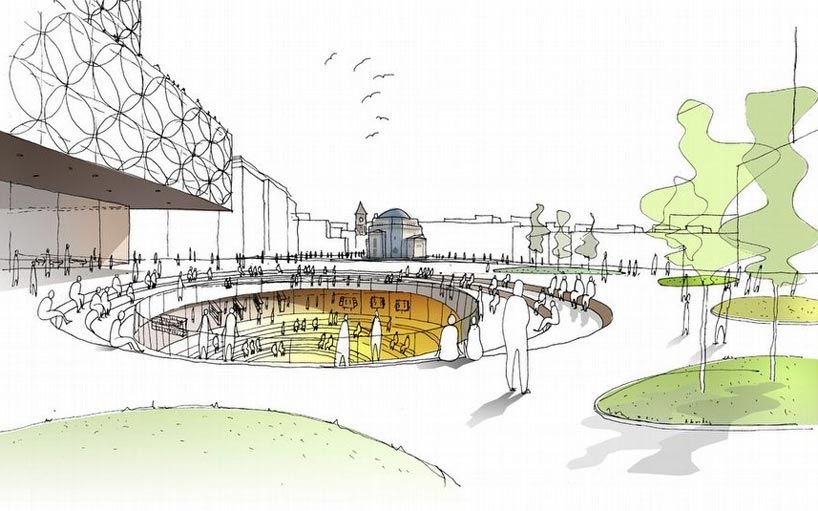Sustainability in Design: Our Commitment to Greener Architecture
As an architecture studio, we recognise that our industry plays a crucial role in shaping the future of our planet. With the built environment accounting for nearly 40% of global carbon emissions, sustainability is no longer an option—it is a necessity. At our studio, we are committed to integrating environmentally responsible practices into every aspect of our work, ensuring that our designs not only serve the present but also safeguard the future.
The Importance of Sustainable Architecture
Sustainable architecture goes beyond aesthetics and functionality. It is about designing buildings that minimise environmental impact, optimise resource efficiency, and enhance the well-being of their occupants. By adopting eco-friendly materials, energy-efficient technologies, and innovative construction methods, we aim to reduce the carbon footprint of our projects and contribute to a healthier, more sustainable world.
Our Approach to Sustainability
At Landmark Design, we have developed a comprehensive approach to sustainability that is embedded in every stage of our design process. From conceptualisation to completion, we strive to create buildings that align with the principles of sustainability in the following ways:
1. Energy Efficiency and Renewable Resources
One of our primary focuses is on reducing the energy consumption of buildings. We achieve this through:
Passive Design Strategies: By optimising the orientation, insulation, and natural ventilation of our buildings, we reduce the reliance on mechanical heating and cooling systems.
Renewable Energy Integration: We incorporate solar panels, wind turbines, and geothermal energy systems where possible to power our projects with clean, renewable sources.
High-Performance Building Envelopes: Our designs prioritise advanced insulation, triple-glazed windows, and airtight construction techniques to enhance energy efficiency where possible.
2. Sustainable Material Selection
The materials we choose have a significant impact on a building's sustainability. We prioritise:
Locally Sourced Materials: Reducing transportation emissions by using materials that are available regionally.
Recycled and Reclaimed Elements: We integrate recycled steel, reclaimed wood, and repurposed bricks to give old materials a new life.
Low-VOC and Non-Toxic Finishes: Ensuring indoor air quality remains high by selecting paints, adhesives, and coatings that do not emit harmful chemicals.
3. Water Conservation Strategies
Water is a precious resource, and we design our projects with conservation in mind by:
Rainwater Harvesting Systems: Collecting and reusing rainwater for irrigation and plumbing.
Greywater Recycling: Repurposing wastewater from sinks and showers for non-potable uses.
Low-Flow Fixtures: Installing taps, toilets, and showerheads that reduce water consumption without compromising performance.
4. Biophilic Design for Well-Being
Sustainability is not just about minimising environmental impact; it is also about creating spaces that promote health and well-being. We embrace biophilic design by:
Incorporating green roofs and living walls to enhance air quality and insulation.
Maximising natural light and ventilation to reduce energy consumption and create comfortable indoor environments.
Designing spaces that integrate seamlessly with nature, fostering a connection between occupants and the environment.
5. Adaptive Reuse and Circular Economy
Rather than demolishing and rebuilding, we emphasise adaptive reuse whenever possible. By repurposing existing structures, we:
Reduce construction waste and embodied carbon emissions.
Preserve architectural heritage and community identity.
Extend the life cycle of materials, aligning with circular economy principles.
Case Studies: Our Sustainable Projects in Action
To demonstrate our commitment to sustainability, here are a few examples of projects where we successfully implemented these principles:
Butser Quarry Re-Development
In an effort to design a carbon-neutral office, we incorporated:
A solar energy system that offsets 80% of the building’s power needs.
Recycled timber and reclaimed steel for the structure and interiors.
A rainwater collection system for landscaping and non-potable water use.
Clarendon Wharf Residential Development
This residential complex was designed to be both luxurious and environmentally responsible:
Passive solar heating and cooling to optimise indoor temperatures year-round.
Vegetated rooftops that provide insulation and reduce urban heat island effects.
Energy-efficient smart home systems to minimise electricity consumption.
Our Future Commitments
While we have made significant strides in sustainable architecture, we know that the journey toward a greener future is ongoing. Our future commitments include:
Increasing the use of carbon-neutral materials in all new projects.
Partnering with organisations that promote sustainable urban planning.
Investing in research and development to explore new eco-friendly construction techniques.
Conclusion
Sustainability is at the heart of our architectural practice. We believe that through responsible design choices, innovative technologies, and a commitment to environmental stewardship, we can create buildings that not only meet the needs of today but also protect the planet for future generations. Our studio remains dedicated to pushing the boundaries of sustainable architecture and inspiring others to do the same.
If you’re interested in learning more about our sustainable projects or want to collaborate with us, feel free to reach out. Together, we can build a greener, more resilient world.


